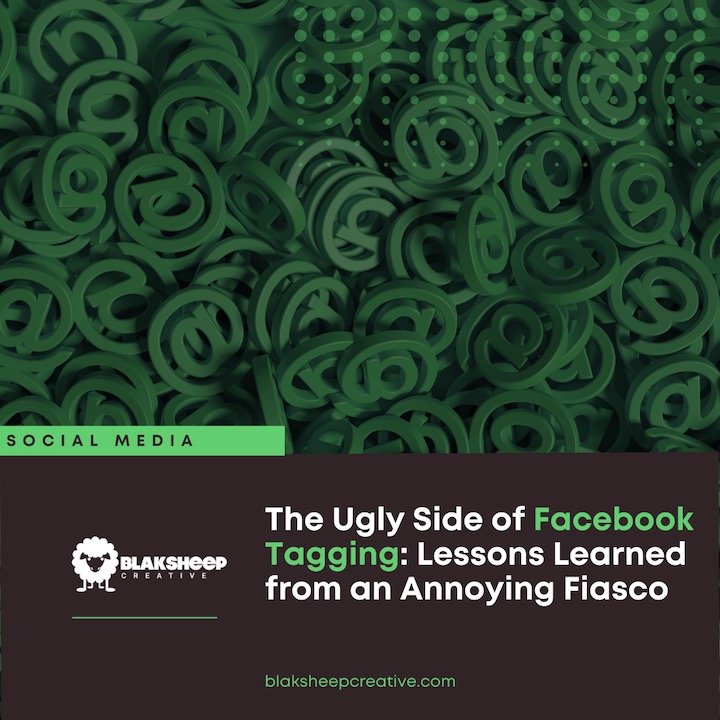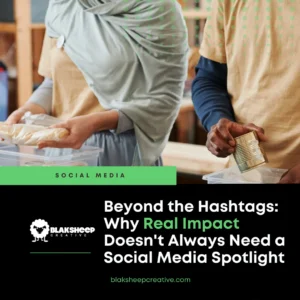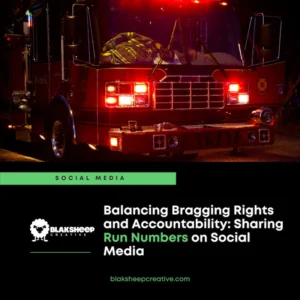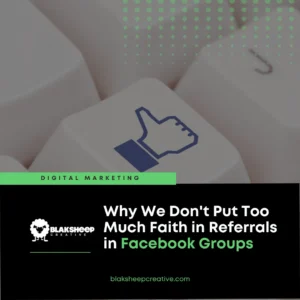Let’s talk about something that’s become a thorn in the side of many Facebook users – tagging. Ah, yes, tagging, the art of shamelessly plastering your posts with the names of everyone and their grandma.
It’s a practice that can turn your once-beloved Facebook feed into a chaotic nightmare. We’re here at BlakSheep Creative to share our exasperating journey through the world of relentless tagging, and let’s just say it wasn’t all sunshine and rainbows.
Once Upon a Time, in a Tagging Overload
We used to be loyal followers, but here’s the deal – one particular business we followed (note the past tense) took tagging to a whole new level. We’re not talking about the occasional shout-out or a tag in something genuinely relevant; we’re talking about an all-out tagging extravaganza.
Increased Visibility or Irritating Invasion?
You see, the pros of tagging on Facebook are pretty clear-cut – increased visibility, enhanced engagement, acknowledgment, collaboration, and event promotion. These are the sweet rewards of tagging when it’s done right. But let’s not kid ourselves; the keyword here is “right.”
Why?
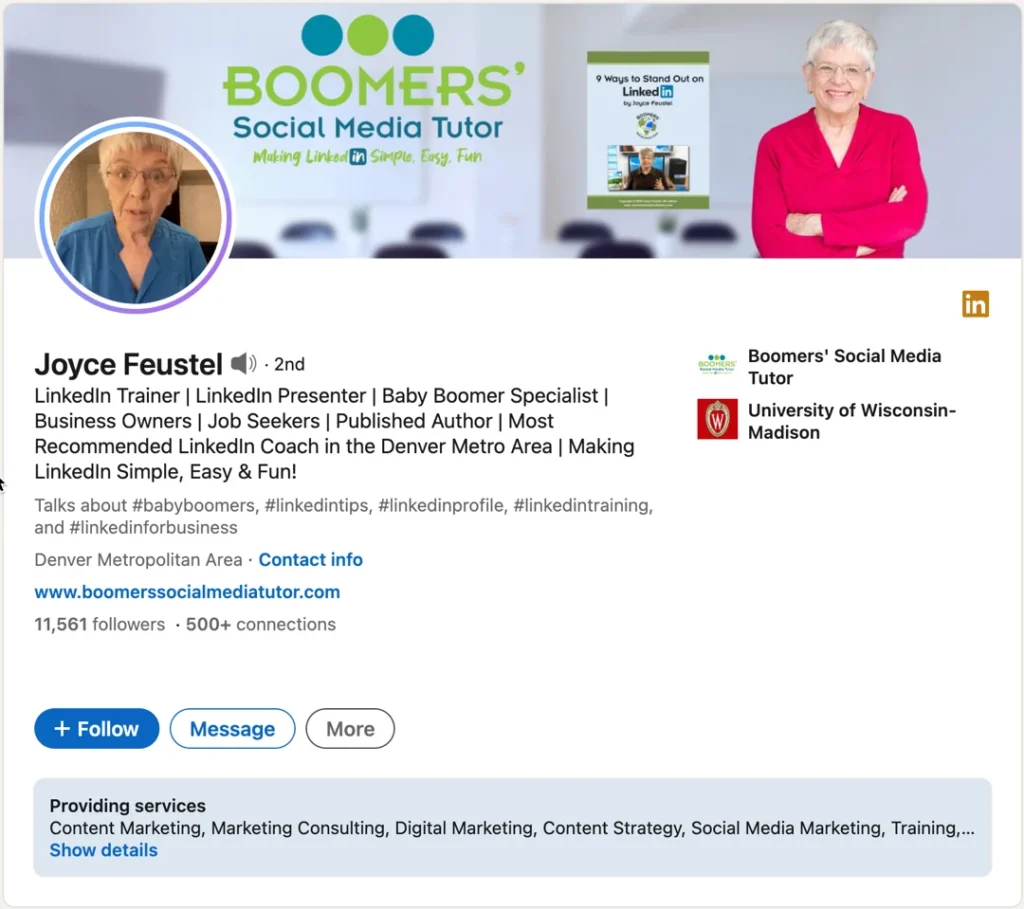
According to Joyce Feustel, a LinkedIn Trainer and Social Media Specialist, there are pros and cons to tagging on Facebook. She’s a pro at making LinkedIn simple, easy, and fun, with 174 articles. But when it comes to Facebook tagging, even the experts have mixed feelings.
Joyce explains that tagging can be a double-edged sword. Part of her likes it when she’s brought into a post someone else created. It can be a way of acknowledging or thanking someone for something, which is perfectly fine. However, here’s where the rub begins.
Cons of Being Tagged (and How to Resolve Them):
Sometimes, many people are tagged in the same post. When those people comment, you receive notifications because you were tagged, too. These comments can be confusing and even annoying, especially if you have no idea who most of the others are.
And sometimes, you simply don’t care to get all these comments from people you may not know. So, if you think a post you’re tagged in will result in a lot of comments, Joyce suggests removing the tag. It’s a handy escape route. No one is notified that you’ve removed the tag, and you won’t be bothered by notifications when people comment on the post.
Pros of Being Tagged (and How to Tag Others):
On the flip side, tagging can also be a gesture of honor or thanks. Often, when Joyce has been tagged, someone wants to appreciate her for something. This kind of tagging is perfectly fine and can enhance your online relationships. However, Joyce recommends being judicious about tagging because not everyone appreciates being referenced in a post via a tag.
So, in the grand scheme of things, tagging can be a powerful tool on Facebook. It can enhance your visibility and engagement when used correctly. But, as Joyce Feustel wisely points out, it’s all about doing it right and being considerate of others’ preferences in the digital realm.
The Dark Side of Tagging
Our friends at this business, who shall remain nameless (though they probably know who they are), decided they’d test the limits of our patience. Instead of thoughtful, relevant tagging, they unleashed a torrent of tags that made our notifications go haywire. It was like a digital tsunami of annoyance.
Excessive Tagging: The Ultimate Turn-Off
The first con of tagging, which is perhaps the most glaring, is the annoyance factor. Excessive tagging is a one-way ticket to the unfollow button, especially when it’s not even remotely relevant to the tagged individuals. It’s the digital equivalent of a pushy salesperson who won’t take “no” for an answer. Tag us once, fine; tag us fifteen times in a single post, and we’re out.

Image Source: Facebook @ Tagging Etiquette – A Guide For Personal And Business Use
In the world of Facebook @ tagging etiquette, Mari Smith, a renowned expert in the field, sheds light on the dos and don’ts of this practice. While tagging can be a powerful tool for engagement and recognition, abusing it can quickly lead to frustration. Understanding the rules of engagement is crucial to preventing your well-intentioned tags from becoming a nuisance.
According to Mari Smith, @ tagging has two primary components: it creates hyperlinks to the profiles or pages you tag and automatically posts onto their wall. The latter aspect is where things can get tricky and where the etiquettes of tagging come into play.
Why use @ tags?
There are many great uses for @ tags. For example, one of the best uses of an @ tag is when you find a piece of content you’d like to share with your friends/fans – you can copy and paste that content to your wall and add an @ tag for the originator by way of attribution. This is essentially the Facebook equivalent of a “retweet” on Twitter.
According to Mari, “@ tagging etiquette, I believe it’s vital – from a strategic relationship-building standpoint – always to consider how your post will come across on someone else’s profile or page wall. Also, consider whether the post might get a lot of activity, thus creating a logjam of notifications for the friend(s) you tagged.”
Here are some general guidelines on do’s and dont’s:
Do use @ tagging:
- To acknowledge and give credit.
- To provide attribution for content you share.
- To show appreciation.
- To help promote other fan pages.
- To cross-reference other fan pages, assuming there is no conflict of interest.
- To @ tag your own page strategically (e.g., by way of a signature when making wall posts).
Do not use @ tagging:
- As a way to “poach” fans from other pages that offer the same/similar service as you do to the same/similar target audience.
- As a way to post your affiliate link on the wall of the affiliate program owner’s fan page.
- As a way to get someone’s attention for self-serving reasons.
- As a way to “imply endorsement” by that person/page.
In summary, tagging should be done thoughtfully and considerately. When done right, it can be a valuable tool for engagement and recognition. However, as Mari Smith points out, overstepping the boundaries of tagging etiquette can quickly turn your well-intentioned tags into a digital nuisance, driving people away rather than engaging them.
To delve deeper into Facebook @ tagging etiquette, you can check out Mari Smith’s comprehensive guide. Despite the post being from 2011, the principles of tagging etiquette remain relevant and insightful.
Privacy Breach Alert
Privacy, anyone? Respecting others’ privacy settings seemed tossed out the window in this tagging frenzy. Tagging people without their consent is a breach of trust. Not everyone wants their name associated with every Tom, Dick, and Harry’s posts. It’s basic etiquette, people!
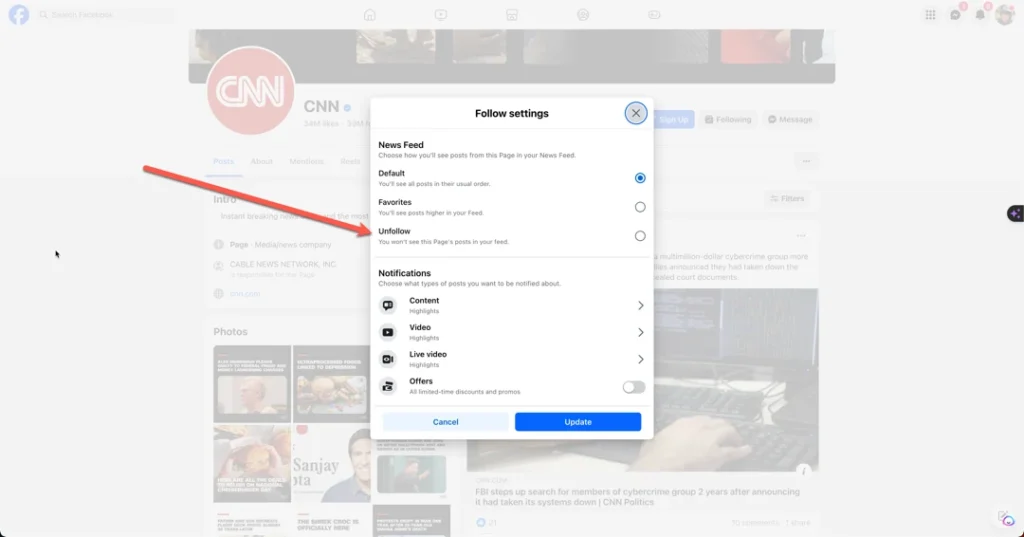
Adverse Reactions: The Unseen Fallout
The fallout from this tagging circus was not pretty. Inappropriate or inaccurate tagging can lead to adverse reactions. In our case, it led to the swift unfollowing of a business that, at one point, we genuinely admired. It’s a prime example of how a good thing, like tagging, can turn sour in the blink of an eye.
The Algorithm Strikes Back
Oh, the dreaded Facebook algorithm. It’s like a digital judge and not fond of spammy behavior. When your content gets reported as spam due to excessive tagging, brace yourself for a drop in reach and visibility. It’s the algorithm’s way of saying, “Stop the madness!”
This situation underscores a broader issue within Facebook communities: the importance of building genuine, meaningful connections rather than relying on superficial interactions or aggressive marketing tactics. Our experience with over-tagging is a stark reminder of why at BlakSheep Creative, we advocate for a more holistic approach to social media engagement.
For a deeper dive into how we navigate the complexities of online referrals and community interactions, check out our insights on Why We Don’t Put Too Much Faith in Referrals in Facebook Groups.
Bottom line — don’t spam! With that said, use tags wisely to increase engagement and create meaningful connections with users. That way, everyone wins!
To learn more about Facebook’s stance on spam, check out their official guidelines. Here’s the gist: be mindful of how often you tag people in posts, as it could negatively impact your reach and visibility.
Tagging Etiquette: A Forgotten Art
Tagging etiquette isn’t just a formality; it’s the glue that holds the social media world together. It’s not just about what you tag; it’s about how you tag. Failing to follow tagging guidelines can tarnish your online reputation faster than you can say, “Tag me if you dare.”
IF I HAVE ONE MORE PERSON TAG ME IN AN @ EVERYONE ON FACEBOOK, I’M GONNA GO INSANE 🙂 I WILL LEAVE YOUR GROUP.
— Allyson Werth (@allyson_werth) July 29, 2022
So, what have we learned from our tagging ordeal? Well, for one, excessive tagging is the ultimate turn-off. It’s a surefire way to drive your followers away faster than you can say “unfollow.” Secondly, respect others’ privacy settings – it’s not just a suggestion; it’s a rule. Third, the Facebook algorithm is ruthless and doesn’t take kindly to spammy practices. And finally, tagging etiquette isn’t a joke; it’s the foundation of a positive online presence.
In our world, the annoyance of excessive tagging is all too real. It’s a cautionary tale of how a once-loyal follower can become an irritated ex-follower. So, take this as friendly advice – tag with care, tag with thoughtfulness or risk becoming the annoying tagger that no one wants to follow. Don’t be that business!
Now, let’s discuss tagging best practices and what to do without over-tagging.
What to Do: Navigating Facebook Tagging with Finesse
In our exploration of the world of Facebook tagging, we’ve uncovered both its benefits and its potential annoyances. It’s an art that, when wielded with care, can amplify your online presence. However, like any art form, there are nuances to master. So, let’s dive into some essential do’s and don’ts to make the most of Facebook tagging.
Tag with Relevance and Purpose
Before you tag someone, consider whether it enhances the post’s value and is relevant to the tagged individuals. Tagging should never be arbitrary. Instead, it should contribute to the message or purpose of your post, serving as an extension of your content.
Quality Over Quantity: Avoid Excessive Tagging
Remember, less is often more. It’s tempting to tag everyone and their followers, but indiscriminate tagging can backfire, especially when it doesn’t contribute to the post. It can lead to annoyance and even unfollows. Instead, opt for quality over quantity, focusing on those who genuinely add value to the conversation.
Respect Privacy Settings
Respect the privacy settings of others. If someone has chosen not to be tagged or to limit who can tag them, honor their choice. Tagging without consent can be invasive and can damage your online relationships.
Ask for Consent When in Doubt
When in doubt, ask for consent before tagging. It’s a courteous gesture that demonstrates respect and consideration. It’s always better to seek permission than to risk causing annoyance or discomfort.
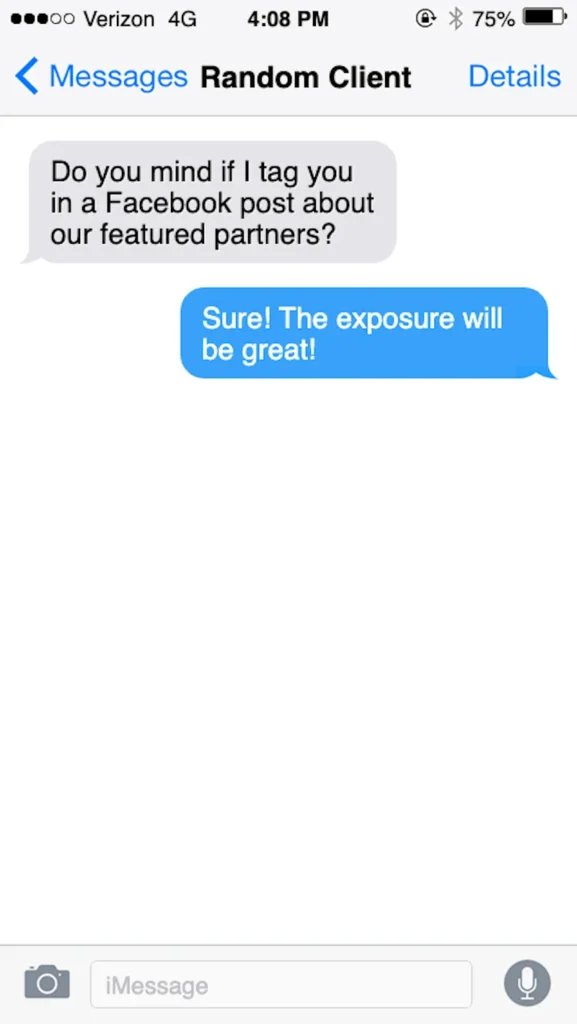
Foster Positive Engagement
Use tagging as a means to foster positive engagement, recognition, and collaboration within your network. Tagging can be a way to acknowledge and celebrate the contributions of individuals in your network. When used thoughtfully, it can enhance your online relationships.
By following these tagging best practices, you can unlock the true power of Facebook tagging while avoiding its pitfalls. Remember, in the world of Facebook, thoughtful tagging consistently outperforms mindless quantity.
Are you tired of annoying your followers with excessive tagging?
Do you want to learn how to use Facebook tagging to amplify your online presence? Then contact BlakSheep Creative today! We’ll teach you how to tag with relevance and purpose, avoid excessive tagging, respect privacy settings, ask for consent when in doubt, and foster positive engagement.
With our help, you can use Facebook tagging to connect with your audience, build relationships, and grow your business. Contact us today!
